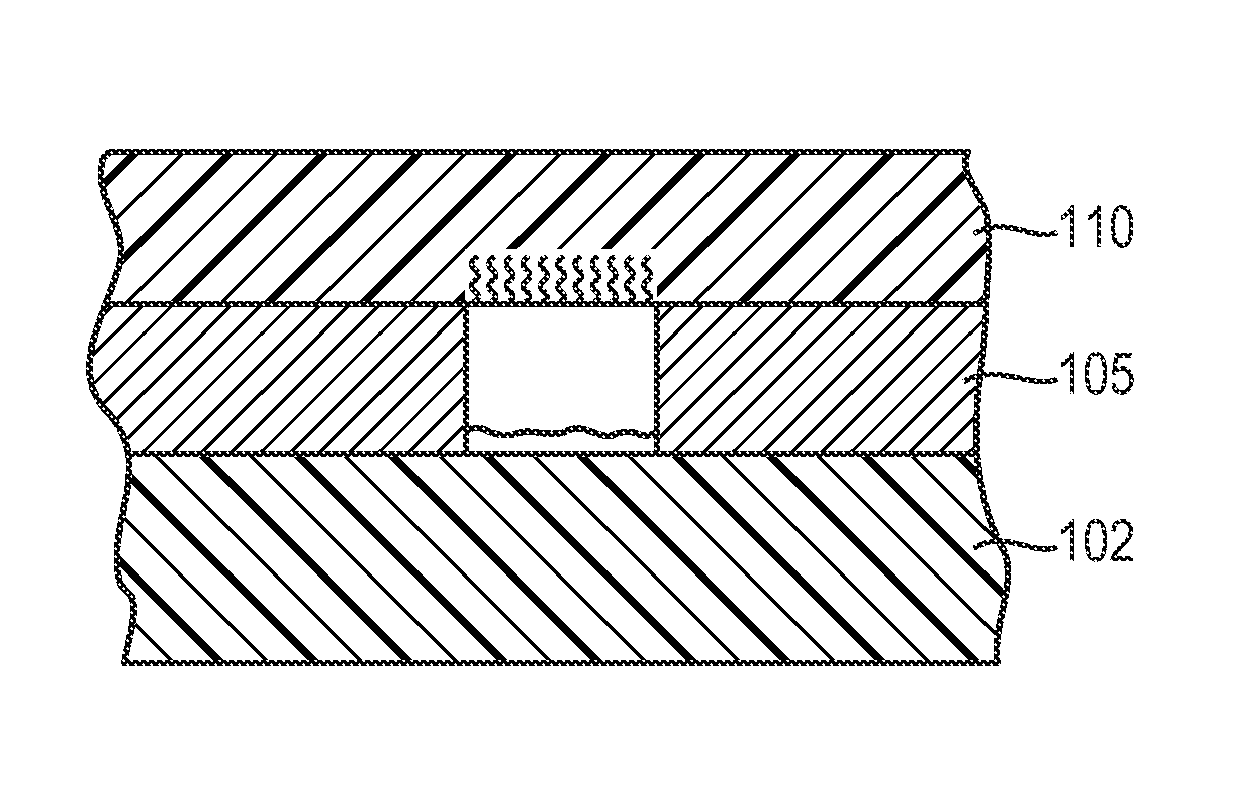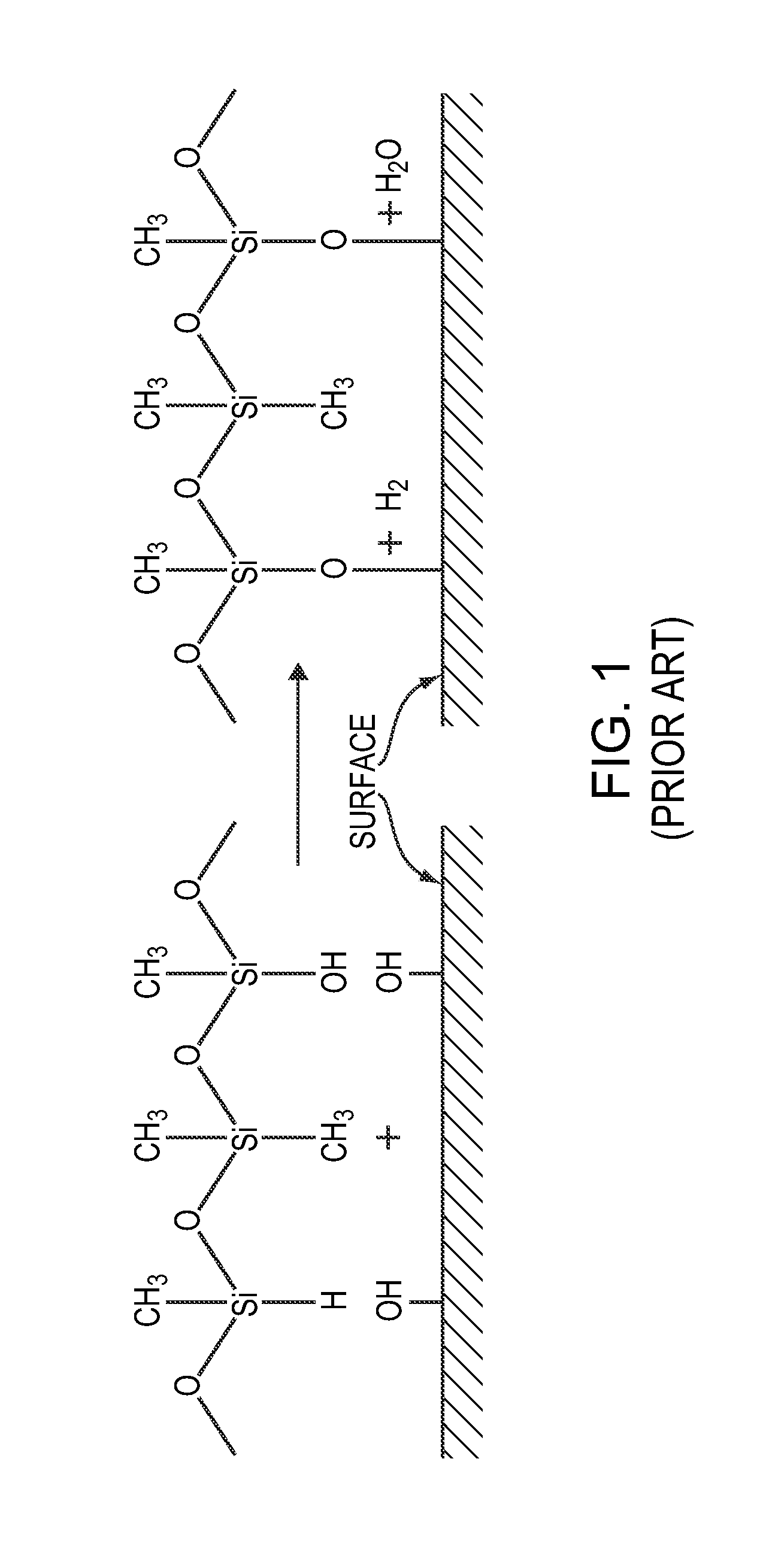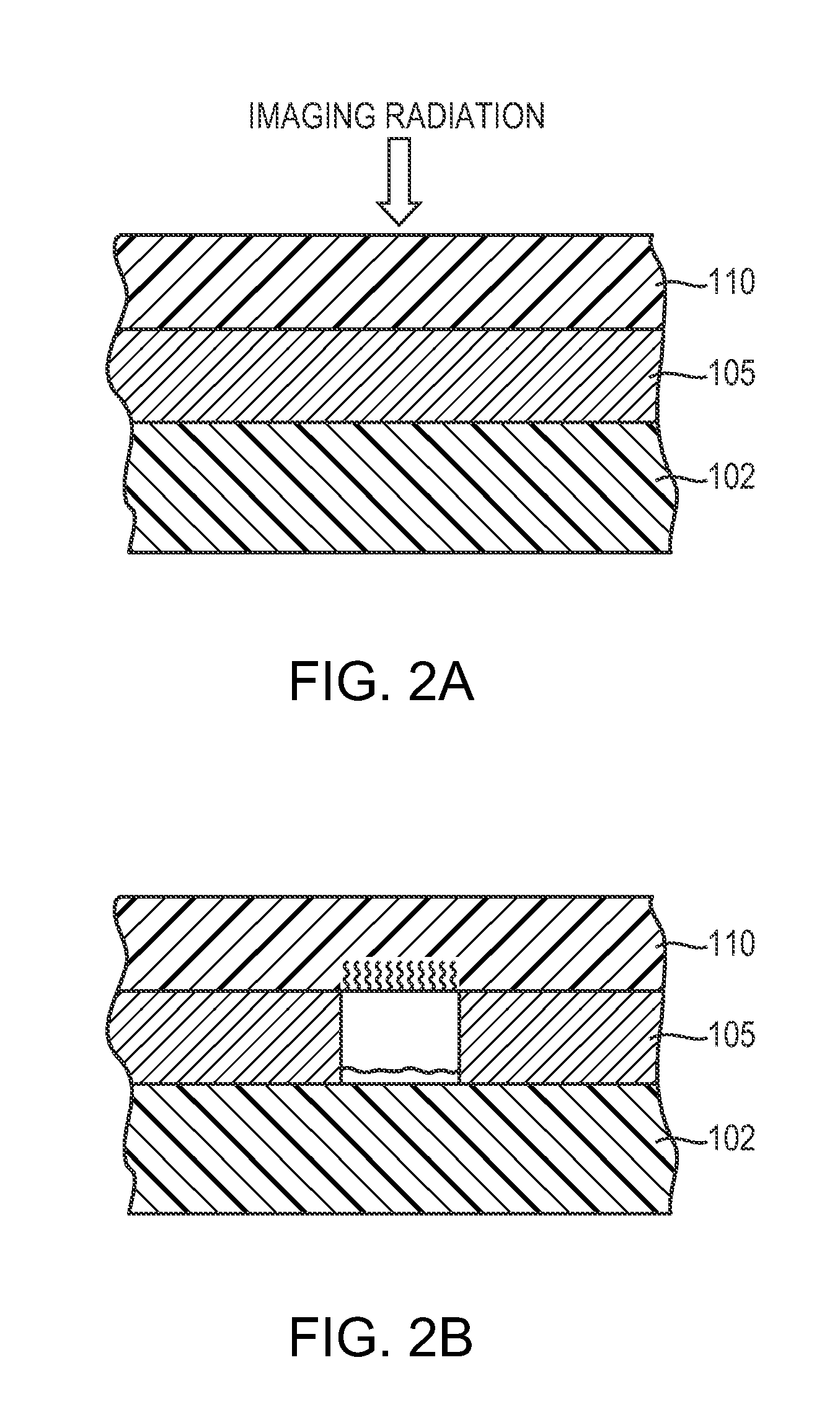Waterless printing members and related methods
a technology of water-based printing and members, applied in the field of lithographic printing, can solve the problems of limited compatibility with organic compounds, increased the possibility of competing side reactions, and the inability to account for the long-term stable anchorage of silicones to metal and polymer surfaces, etc., to facilitate quality assurance evaluation or monitoring
- Summary
- Abstract
- Description
- Claims
- Application Information
AI Technical Summary
Benefits of technology
Problems solved by technology
Method used
Image
Examples
examples 1-3
and C1
[0059]These examples describe negative-working waterless printing plates that include a highly crosslinked silicone layer disposed above a thin titanium imaging layer that is itself disposed on a polyester substrate. A preferred substrate is a 175 μm white polyester film sold by DuPont-Teijin Films (Hopewell, Va.) under the name MELINEX 927W.
[0060]The imaging layer of the printing member is a thin titanium layer disposed on the polymer substrate by DC magnetron sputtering of a titanium target using ultrahigh purity argon as the sputtering gas. Prior to the metal deposition, the sputtering chamber is evacuated to base pressures below 3×10−5 Torr and back-filled with argon up to a pressure of 5 mTorr. The sputtering process yields a layer of mixed metal / metal oxide composition with total thickness of 25 nm which, upon exposure to air, reacts with water molecules yielding a surface rich in hydroxyl functional groups. The latter act as the bonding sites for the adhesion of the pol...
examples 4-6
and C2
[0072]Printing members similar to those described in Examples 1-3 were made with a thicker silicone top layers to create more durable printing members. In these examples, the same formulations were applied to the metalized substrate with a wire-round rod, then dried and cured at 138° C. for one minute to produce coatings of 2.0 g / m2.
[0073]The printing members were imaged, cleaned, and tested as described in Examples 1-3. The performance of these examples is summarized in the following table:
Vi-PDMSMolecularFormulationMEKPressExampleweight (g / mol)SiH:SiViRubsDurabilityExample 462,70013.3:130-3512,000 to 14,000Example 572,00015.2:130-3513,000 to 15,000Example 6117,00024.7:130-3515,000 to 16,000Example C2155,00032.8:110-158000
[0074]Consistent with the results obtained in the previous examples, the results show that printing members made with the intermediate-molecular-weight silicone resin exhibit improved durability, which is at least twice that of the comparative Example C2 mad...
examples 7
and C3-C5
[0075]Silicone formulations of the following composition, by weight, were made with the vinyl-functional PDMS formulations described above. These examples contain about half the concentration of the crosslinker used in Examples 1-3.
ComponentPartsVinyl Silicone12.40DC Syl Off 7367 Crosslinker0.27CPC 072 Pt Catalyst0.17Heptane87.16
[0076]The formulations were applied to the metalized substrate with a wire-round rod, then dried and cured at 138° C. for one minute to produce coatings of about 1.1 g / m2.
Vi-PDMSMolecularFormulationMEKExampleweight (g / mol)SiH:SiViRubsExample C362,700 6.6:15-10Example C472,000 7.6:15-10Example 7117,00012.4:115-20 Example C5155,00016.4:15-10
[0077]The reduction of the crosslinker concentration leads to considerable loss of solvent resistance by the printing members of Examples C3 and C4 made with the lower-molecular-weight resins (compared to Examples 1 and 2). The change may be attributed to the reduction of crosslinker molecules available for crossli...
PUM
| Property | Measurement | Unit |
|---|---|---|
| thickness | aaaaa | aaaaa |
| mol % | aaaaa | aaaaa |
| mol % | aaaaa | aaaaa |
Abstract
Description
Claims
Application Information
 Login to View More
Login to View More - R&D
- Intellectual Property
- Life Sciences
- Materials
- Tech Scout
- Unparalleled Data Quality
- Higher Quality Content
- 60% Fewer Hallucinations
Browse by: Latest US Patents, China's latest patents, Technical Efficacy Thesaurus, Application Domain, Technology Topic, Popular Technical Reports.
© 2025 PatSnap. All rights reserved.Legal|Privacy policy|Modern Slavery Act Transparency Statement|Sitemap|About US| Contact US: help@patsnap.com



